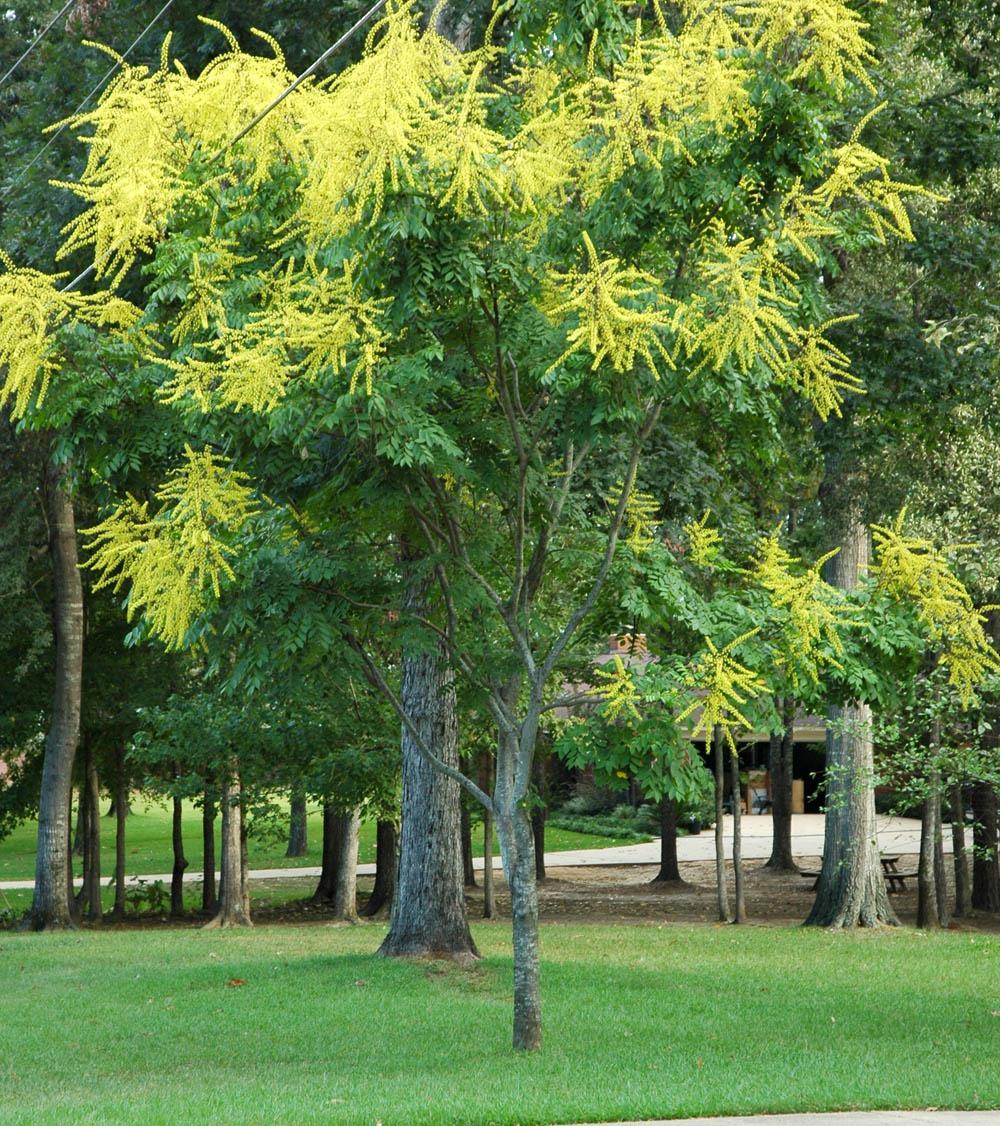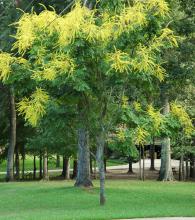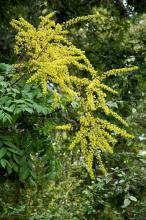Information Possibly Outdated
The information presented on this page was originally released on September 14, 2006. It may not be outdated, but please search our site for more current information. If you plan to quote or reference this information in a publication, please check with the Extension specialist or author before proceeding.
Goldenrain tree can make anyone jealous
By Norman Winter
MSU Horticulturist
Central Mississippi Research & Extension Center
Every day as I drive back and forth to the office, I get jealous of a neighbor who has an incredibly beautiful goldenrain tree blooming.
This is such an exotic-looking tree that it also has names like Bougainvillea goldenrain tree and Chinese flame tree. The latter is a very descriptive name because these trees erupt into long 12- to 15-inch sprays of yellow blossoms.
Here are two more descriptive words that should get everyone's attention this year: drought tolerant. I don't know how your rainfall has been, but it has been non-existent in my neighborhood. There are a lot of trees defoliating and giving an almost fall look, yet the goldenrain is in full bloom, showing off for everyone who drives by.
They are great landscape trees, especially considering the bright yellow blossoms that hang down in late summer when everything else looks like toast, but for some reason these trees are still rare.
There are two species of goldenrain tree grown in Mississippi, and both are drought tolerant once established in the landscape. Koelreuteria paniculata is hardy in zones 6 through 9 and blooms in early summer around here. There are also varieties that reportedly bloom later.
Koelreuteria bipinnata blooms in late summer and early fall, and it is hardy in zones 8 and 9. Several reference books suggest it will grow in zone 7 and report tip damage occurs around minus 5 degrees. Blooms, however, will not be impacted since the flowers form on new growth. The 50-year-type freezes that occurred twice in the 1980s did considerable damage to the bipinnata.
There is no contest as to which one is prettiest, and that is the later blooming one. The golden-yellow flowers each have a touch of red at the base. When the bloom is through and the puffy fruit capsules are formed, they too color up in shades of cream with rose-pink and salmon. The fruiting structures of the paniculata turn dark brown.
There are little-to-no insect or disease threats to these trees. Both are deciduous, and many years they obtain a striking yellow fall leaf color. They also are tough in heat like we experienced this summer. Use them to provide welcome shade to the patio or deck.
The goldenrain tree is small, reaching 20 to 40 feet in height and flattens at the top. It fits nicely in urban landscapes. Choose a site in full sun and set out nursery-grown plants anytime into well-drained soil. Dig the hole three to five times as wide as the root ball but no deeper. The top of the root ball should be even with the soil profile.
Fall is a good time to plant trees. Should you find one now, form a 4-inch berm outside the root ball area that holds five gallons of water. After planting, water deeply and mulch. Remove the berm next summer.
Once in the landscape, feed in late winter with an application of an 8-8-8 or similar fertilizer equaling 1 pound per 100 square feet of planted area. This is the area from the trunk to just outside the canopy.
Goldenrain trees are almost always sold generic by species. There are varieties of K. paniculata called Fastigiata and September Gold. Mix one in a planting with a couple of deep lavender crape myrtles, and then you truly will have a perfect picture.




